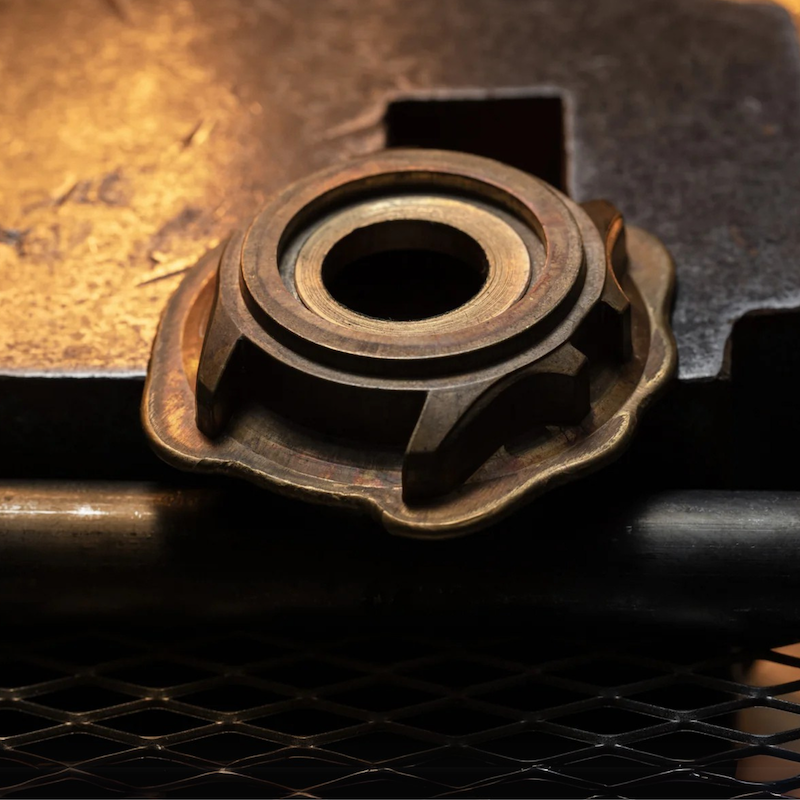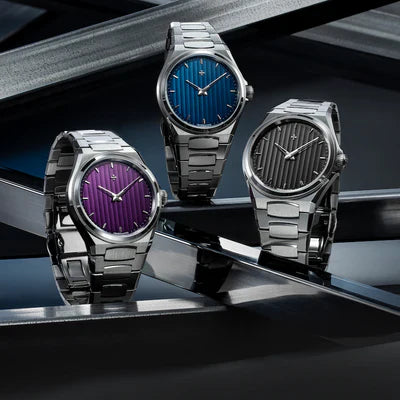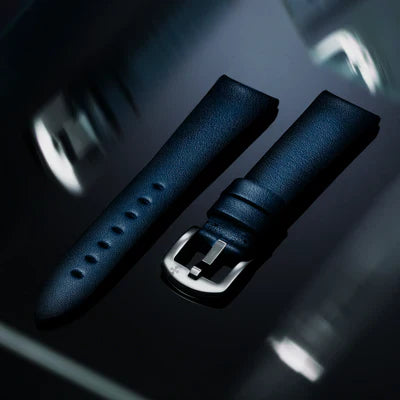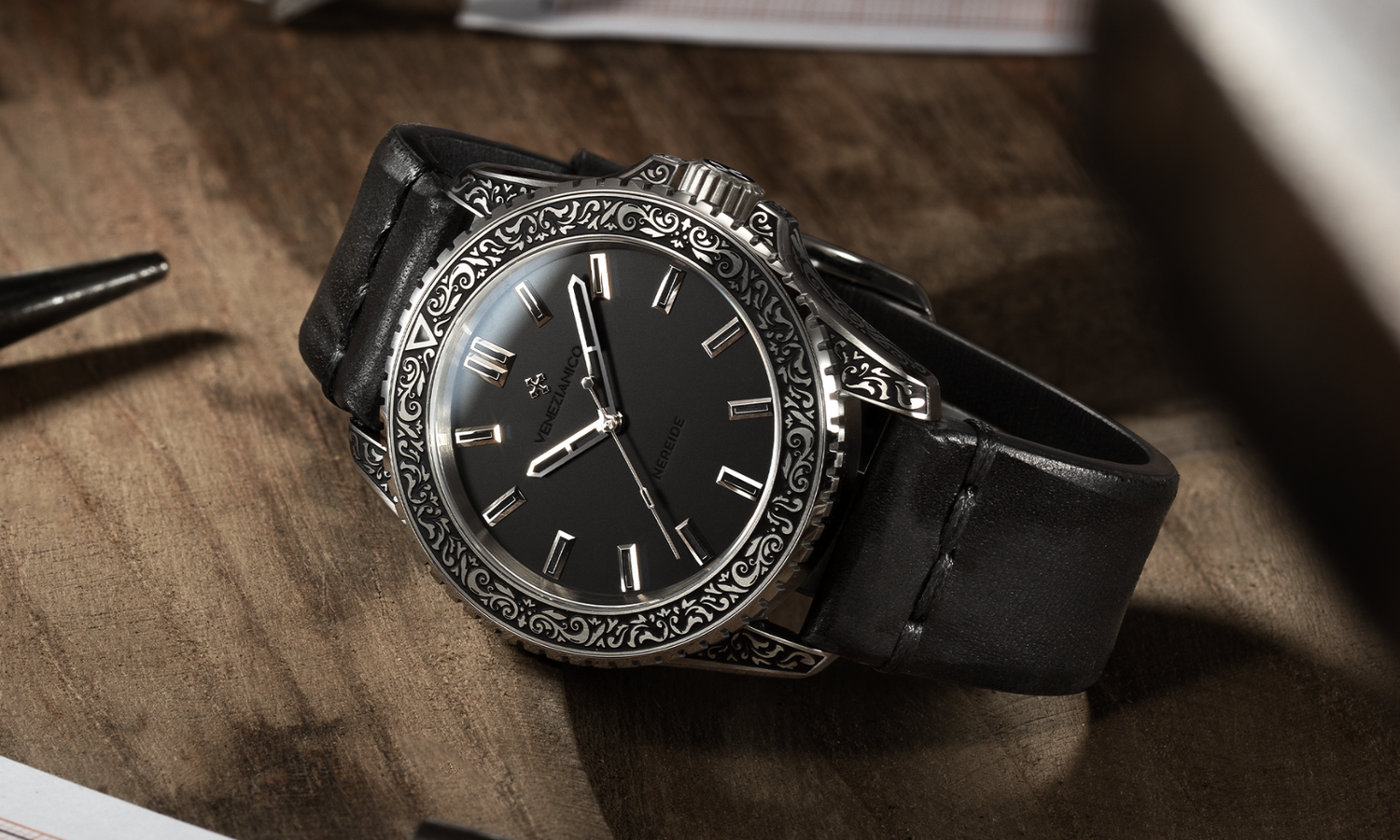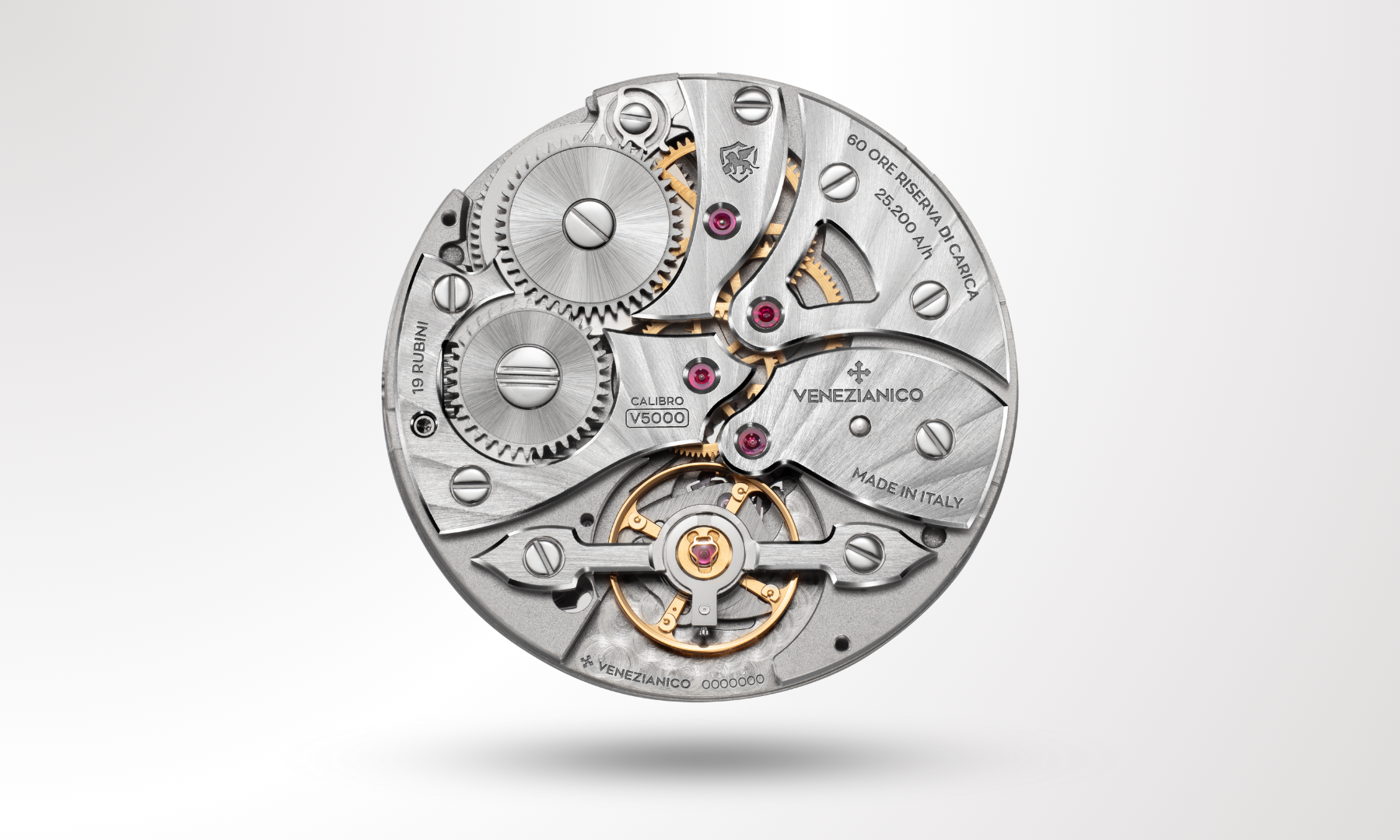The art of engraving doesn’t belong solely to the past: it can become a language of the present. With Nereide Acquaforte, we chose to pay tribute to a technique developed during the Italian Renaissance — acquaforte— reinterpreting it through watchmaking. The case undergoes a treatment that sculpts its surface irregularly, creating visible ridges and grooves. The result is a deep texture that interacts with light in a unique way and enhances the detail of the craftsmanship. A process that echoes the skill of Renaissance engravers, but with a contemporary technical approach.
What is acquaforte
Acquaforte is an engraving technique that originated in the Renaissance. It begins with a metal plate covered in a protective varnish. The design is drawn by hand, exposing the metal underneath. The plate is then immersed in acid, which etches into the uncovered lines, creating fine, precise details.
This process allows for rich contrast and highly detailed results. Originally developed for artistic printing, acquaforte now finds new life in case decoration: each engraving creates a unique, unrepeatable texture that adds visual depth and character to the watch’s design.

Stylistic research
The decorative motif that envelops the case of Nereide Acquaforte is inspired by the acanthus leaf — a recurring element in classical and Renaissance art. A symbol of beauty and harmony, widely used in antiquity and revived by the great masters of the 15th century.
Reinterpreted in a contemporary key, this form becomes part of the watch’s visual language: not a mere decorative detail, but a sign that fuses craftsmanship and culture into a measured, essential design that reflects our vision.

View of the Molo towards the Mint, etching by Luca Carlevarijs, 1703.
A connection to Venice
During the Renaissance, Venice became one of the most vibrant centers for printing and graphic arts. The acquaforte technique flourished in this context, thanks to figures such as Aldo Manuzio, whose editions contributed to the spread of knowledge and typographic aesthetics.
In later centuries, engravers like Giovanni Battista Piranesi brought the technique to new expressive heights, proving that an incised line could faithfully capture architecture, proportions, and vision. In Venice, acquaforte embodies a knowledge that combines technical precision with artistic sensitivity.

Our production process
The case of the Nereide Acquaforte is engraved with a motif inspired by acanthus leaves, drawn directly onto the metal with precision. After engraving, black ink is applied by hand into the grooves to enhance the depth of the decoration. Once dry, the excess is carefully removed, leaving the ink only in the recessed areas. This step sharpens the contours of the design and creates a strong contrast that highlights even the most delicate details.

Nereide Acquaforte: Beyond aesthetics
Nereide Acquaforte stands out for its finely engraved case, decorated with a Renaissance- and neoclassical-inspired acanthus leaf motif. A refined mark that expresses our vision of time — one of balance, depth, and material culture. The black dial, clean and minimalist, interacts with mirror-polished indices and geometric hands, creating a deliberate contrast of light and shadow.
For the first time, both indices and hands are coated in Swiss Super-LumiNova® Black — a technical pigment that remains invisible in daylight and emits a soft green glow in the dark. A functional yet aesthetic solution, designed to preserve the watch’s sophisticated and elegant identity.

Want to learn more about
Message us on Whatsapp or Visit the dedicated Nereide Acquaforte page.


